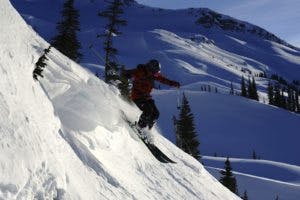By: Dr. Laura Wenger, PT, OCS, FAAOMPT
It’s always refreshing to wake up to inches of snow on the ground and know that winter is approaching! For those of us Durangoans who love to ski, it’s even more exciting to hear about the 2+ feet of snow that fell in the last 24 hours at the resort. If you’re like me, this news got me looking around for my skis and gear this morning to make sure everything is ready to go to hit the slopes this weekend. As I prepare to get on my skis for the first time in many months, as a PT I also think about whether my body is ready to go in order to set my self up for success for injury prevention this winter. Cue the literature search…
Unfortunately, when digging into the research, there is little information on ski injury prevention for the recreational skier like me. However, I found an interesting review study discussion ski injury prevention specific to alpine racers, so- while not perfect- I’m taking some of the information from this review to extrapolate into my own skiing and the ability of my patients to think of certain methods to reduce their ski injury risk this upcoming season.1
In this review of the existing data, the researchers found that the majority of alpine ski racing injuries occurred while turning (80%) or landing (19%).1 The researchers also found that there were four athlete-related risk factors that have been identify with statistical evidence, including:1
- Insufficient core strength/core strength imbalance– something we can work on!
- Female/male sex– in this study, males were found to be at higher risk of injury than females
- High skill level– higher ranking athletes were found to be at higher risk of injury than lower ranking athletes, which could be related to many factors such as increased on-snow time
- Unfavorable genetic predisposition– one recent study showed that ACL injury risk of alpine skiers may be related to their parent’s history of injury
In addition to athlete-related risk factors, the researchers outlined their findings on equipment, course, and snow-related injury risk factors as well.1

When assessing the findings of this article, my next question becomes: “Is there anything I can do or change for myself or my patients given this information?”. Given the information above, the one thing we can address in the physical therapy realm is core strength and muscle imbalance. Something that we are offering at Tomsic PT is our Winter Readiness Program, which gives you the opportunity to work with a PT one-on-one for an hour for an individualized assessment and program development to help you be successful in having an injury-free season. Although we can’t modify all of the factors related to ski, and other snow sport, injuries, we can focus on the modifiable risk factors and help you to reduce the impact of those those in a sound manner. If you’re like me and itching to get out on the snow while making sure you are as ready as you can be, make sure to call our office to schedule a Winter Readiness assessment soon. And, keep doing your snow dances!

- Spo¨rri J, Kro¨ll J, Gilgien M, Mu¨ller E. How to prevent injuries in alpine ski racing: what do we know and where do we go from here? Sports Med. 2017;47:599-614.
